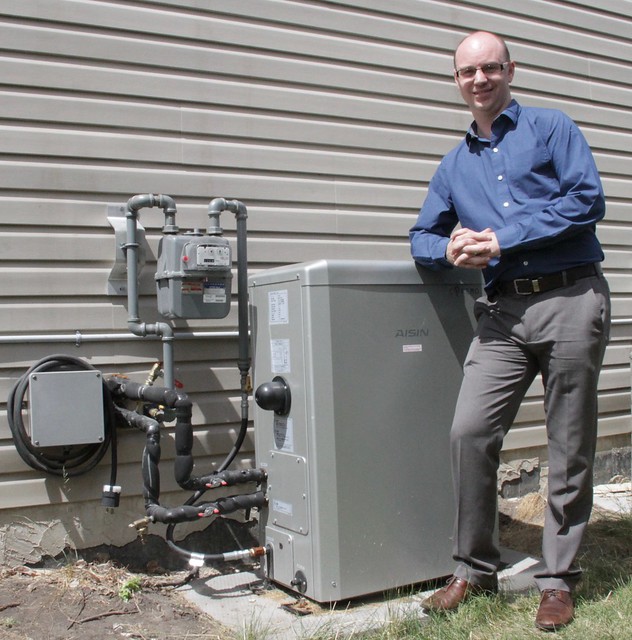By David Dodge and Scott Rollans
Greg Caldwell generates 80 per cent of his own electricity, right in his Edmonton home. He does this using a micro solar combined-heat-and-power (cogen) system—one that combines a rooftop solar system with a small gas-fired generator.
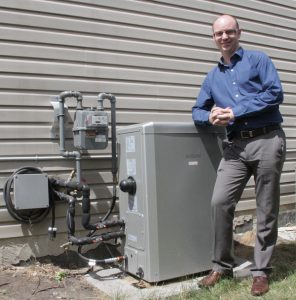
Greg Caldwell with ATCO’s micro cogeneration unit for the home. Paired with a small solar system the system produces 80% of the electricity for the home, all of the heat for hot water and reduces emissions by 40%. Photo David Dodge, GreenEnergyFutures.ca
“Cogen” is short for cogeneration, which is also called combined heat and power (CHP) and has been used widely in larger facilities such as large buildings, swimming pools and even massive power plants. The idea is simple: all engines, such as a power plant generator or the engine in your car, produce heat that is normally wasted.
A micro cogen unit produces electricity while simultaneously capturing the excess heat for use in the home.
“We were approached a few years ago to try out this unit and we said ‘Well just the cogen by itself isn’t particularly innovative. How can we maximize the emissions savings in a home?’ And that’s why we went with the solar cogen concept and we’ve been working with it ever since,” explains Greg Caldwell, director of development and innovation at ATCO.
Greg Caldwell loves to take his work home, so they installed the first solar cogen system right in his own home where it’s been for two years.
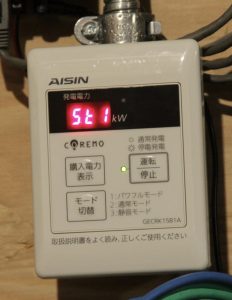
A control system in Greg’s solar cogen system takes electricity from the solar system first, then the micro cogen unit and then the grid if required. Photo David Dodge, GreenEnergyFutures.ca
The micro cogen unit is widely used in Asia, but is relatively new to the North American market.
“The combined heat and power unit is about 90 per cent efficient versus a traditional power plant which might be 50 or 60 per cent efficient,” says Caldwell.
The cogen unit is smaller than a dishwasher and sits outside, beside the home. It’s capable of generating 1.5 kilowatts and works hand-in-hand with a 1.5-kilowatt solar system on the roof.
“When we can’t generate enough electricity for the home using the solar system (clouds or nighttime), the combined heat and power unit generates electricity and heat,” explains Caldwell. That heat is then stored in a buffer tank, where it is used to provide hot water for the home.
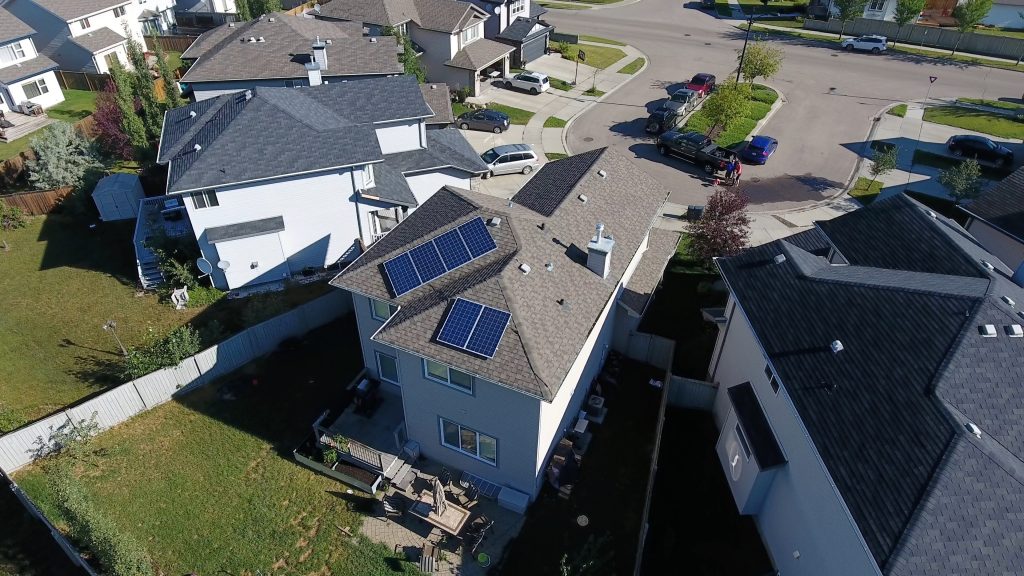
By pairing solar with a micro-cogeneration unit Greg was able to install a smaller solar system which helped overcome the solar limitations of this roof shape and orientation. Photo Mike Elhard
Solar first
Caldwell’s home is grid-connected, but he produces 80 per cent of the electricity for his home right on site. Software sources electricity from solar first; and then the cogen unit kicks when its needed. Finally (and this rarely happens), the house draws power from the grid whenever the solar and cogen system can’t produce enough electricity.
For the home reno market
“This is for any homeowner, whether it’s a single-family home or a row house owner that wants to do their part in reducing emissions,” says Caldwell.
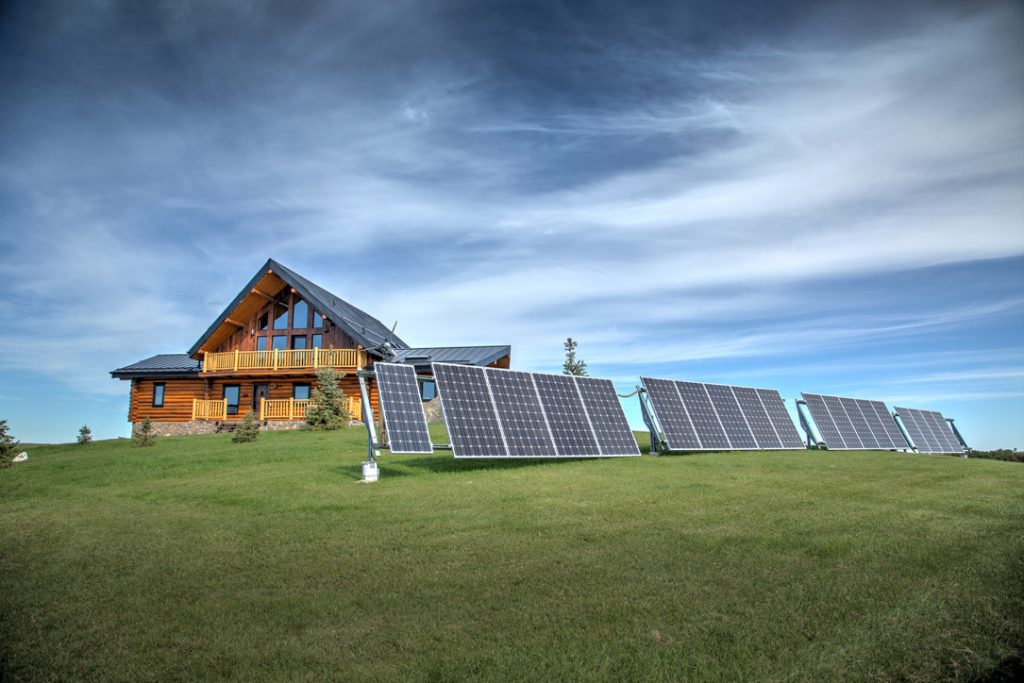
ATCO installed a micro-cogeneration system in this off-grid home in Red Deer, Alberta. It replaced generators with a cogeneration unit and it is now more efficient and cheaper to operate. Photo supplied
A similar system can also be used in off-grid situations. ATCO renovated a large rural home in Red Deer, Alberta that had a large off-grid solar system and battery storage. “They were using backup natural gas generators that weren’t overly reliable or efficient,” says Caldwell. “We retrofitted a small combined heat and power unit on to that home, and we’ve ended up lowering the emissions from the home quite substantially and also lowering their gas bill.”
So what are the economics?
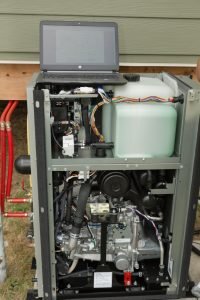
Inside a micro cogen unit is a natural gas-fired generator which also harvests heat which is supplied to the home’s hot water system. Photo supplied
Caldwell’s home is a typical 1,900 square feet home, and has LED lights, efficient appliances and other energy-saving measures. It has a standard gas furnace and water heater. The cost to add a solar cogeneration system to a home like Greg’s is about $16,000. The cogen unit cost about $9,000 –– installation and other components about $2,500. The solar cost around $3/watt, or about $4,500 (minus a 25 per cent Energy Efficiency Alberta rebate).
“The payback on a unit like this, with the solar and the solar rebate that’s available in Alberta today, is about 10 years,” says Caldwell. With volume and experience, he says, his team hopes to get that payback down to five or six years.
Paris and the bid for a low carbon future
In a world grappling with climate change, ATCO is working to be part of the solution. “We’re trying to provide energy solutions to people that allow them to meet some of the challenges we have as a society,” Caldwell says. “Canada has these commitments from Paris and the Pan-Canadian Framework, and we’re saying we can help you get there.”
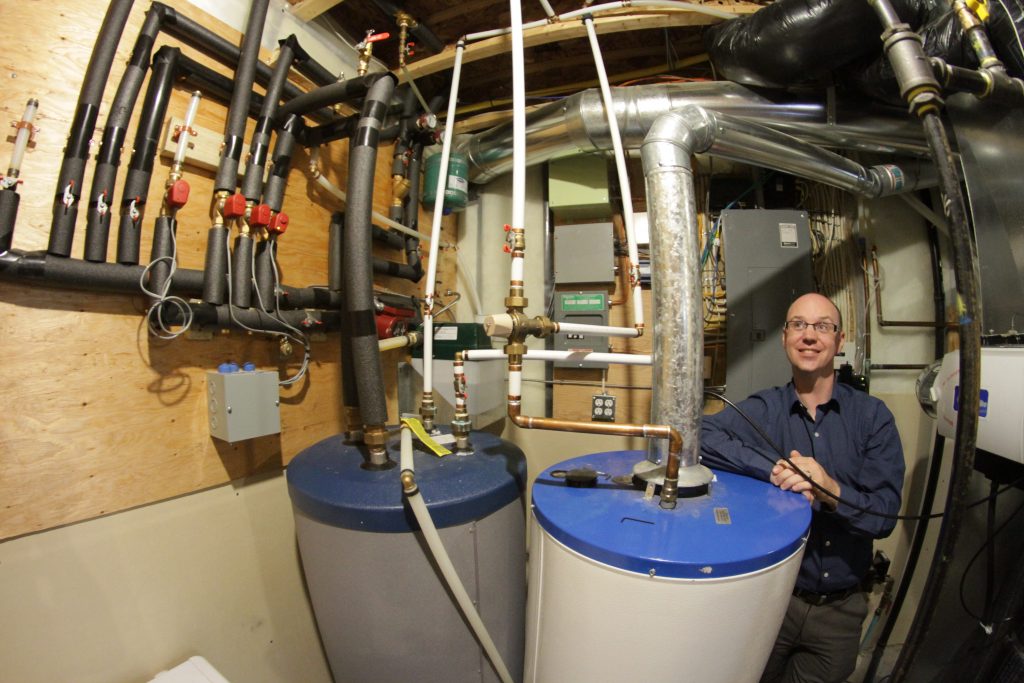
Greg Caldwell’s micro cogen system works with solar to power the home, sends heat to the hot water heater via a buffer tank and any excess heat is fed into the home heating system. He generates 80% of his own electricity and gets enough heat to provide hot water to the home. Photo David Dodge, GreenEnergyFutures.ca
How does Solar Cogen help?
“With the cogen alone, we get about a 30 per cent reduction in annual emissions,” says Caldwell. “And when combined with solar, this home easily gets a 40 per cent reduction in emissions,” says.
Finding new low carbon solutions is Caldwell’s job at ATCO—and solar cogen is just one example.
“Power to gas is using renewable or a low carbon source of energy to create hydrogen, and then mixing that hydrogen with a source of CO2. And when you put the two together you get renewable synthetic methane,” says Caldwell.
ATCO is also working on biogas projects involving anaerobic digestion—such as capturing methane when organic waste or even manure decomposes (as seen in past GEF episodes like Lethbridge Biogas).
“We’re working on a camera that can detect fugitive methane emissions and quantify it so that we can quickly and economically find emitters of methane.” Doing so could help the oil and gas industry eliminate 46 per cent of Alberta’s methane emissions.
With concern about climate change growing, and global investment in renewable energy reaching $279 billion in 2017, ATCO knows its business is evolving. Caldwell’s innovation team and solar cogen are all part of that evolution.

